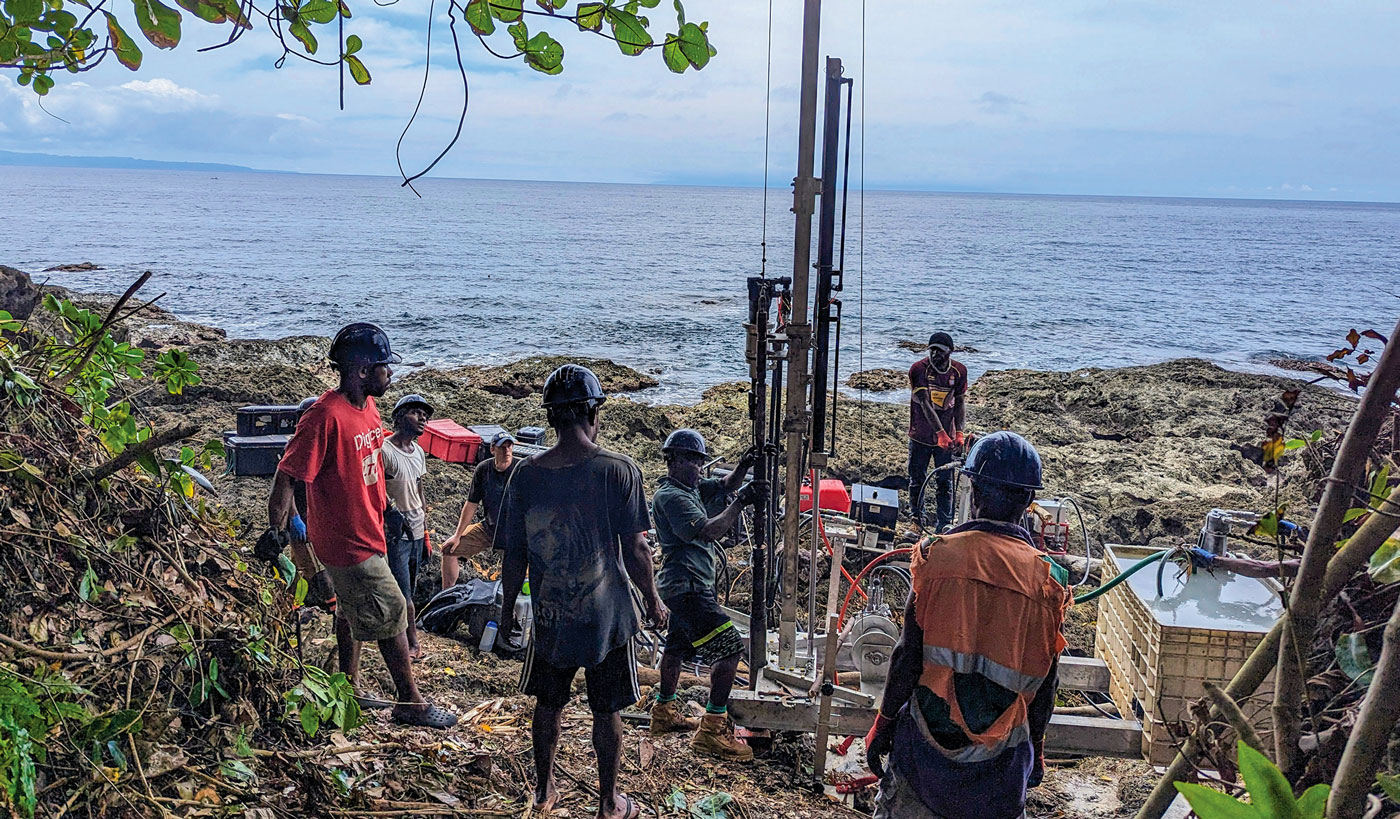
VANUATU—The 500 residents of Tanovusvus do not typically worry about water. The village hugs the coast of Espiritu Santo, the largest island here in Vanuatu, a tropical archipelago in the western South Pacific Ocean. The lush foliage that surrounds it testifies to the several meters of rain it receives annually. The trucksize plastic tank that holds drinking water for the village has rarely run dry—especially during the past 3 years, when an unusually long-lived La Niña climate event brought warmth and wetness to the western Pacific.
But one day in October 2023, Abel Kalo, an outreach coordinator from Vanuatu’s Meteorology & Geo-Hazards Department, arrived in Tanovusvus with a warning: The rains would be drying up. El Niño, La Niña’s opposite number, was here. Months earlier, its signature pattern had emerged: The warm ocean waters that had fueled storms over Vanuatu began to slosh east toward South America. Before inspecting the water tank, which was cracked and leaking and less than one-quarter full, Kalo told the villagers, “You have to be careful.” Speaking in Bislama, Vanuatu’s English-based creole, he said, “These next few months you can’t take this water for granted.”
The El Niño event, now at its peak, is driving weather extremes not just in Vanuatu, but all over the planet. Drought has struck Australia, as well as the Amazon, where intolerably hot waters have suffocated endangered pink dolphins. Rains have drenched Peru, spreading dengue, while warm waters intruding near its coast have disrupted the world’s largest anchovy fishery and forced the nation to cancel a lucrative fishing season. Those same warm waters accelerated Hurricane Otis, which devastated Acapulco and Mexico’s Pacific coast in October 2023. The effects have been truly global: By suppressing the Pacific’s ability to absorb heat from the atmosphere, El Niño helped make 2023 the hottest year in history by a huge margin. “Every time there’s an El Niño event, all kinds of weird funky things happen,” says Pedro DiNezio, a paleoclimate modeler at the University of Colorado Boulder.
Researchers can now predict El Niño and La Niña events months in advance mitigating some of these harms. But the future of this global pacemaker is poorly understood. Will a warming world cause more frequent or severe events? Will it suppress them? Climate models have disagreed drastically, and the historical record is too limited to show a change.
This uncertainty was why Kalo arrived in Tanovusvus not just to deliver a warning, but to pursue an opportunity. He was joined by Judson Partin, a paleoclimatologist at the University of Texas (UT) at Austin who would be staying there for the next 2 months with a small crew of researchers. The duo met with several dozen locals near the village’s central mango tree, answering questions with a bullhorn. When Kalo said they were studying El Niño, many villagers nodded—in Vanuatu, knowing the state of the Pacific, with its impact on farming and fishing, is as important as knowing the season.
Tanovusvus’s terraced coral shoreline was special, Kalo and Partin explained. Buried just beneath the water line were ancient corals, preserved from a time in Earth’s history when frigid temperatures may have caused large changes in the ocean’s behavior—“big signal land,” as Partin calls it. If found intact and drilled out, these corals could capture what El Niño was like during this cold extreme. And that, in turn, could reveal how it will behave in the future, under an opposite climatic extreme. “The way forward is to bring paleo data to bear on this,” says Gabriel Vecchi, a climate scientist at Princeton University.